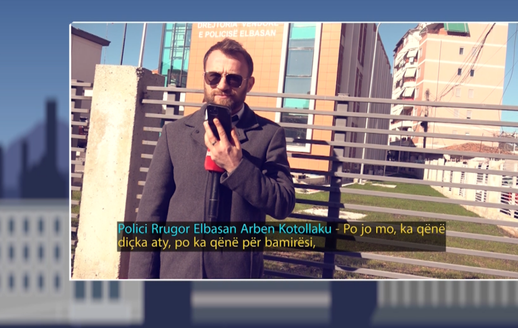
Digital data leaves invisible traces on children


Most bullying cases involving children now occur in online environments. The true extent of digital violence goes beyond simple numbers – it leaves lasting emotional scars.
Digital violence refers to children being exposed to harmful content, harassment via the internet and digital platforms.
This invisible threat behind the screen can severely damage children's self-esteem, social relationships, and academic performance.
Experts point out that social media teasing, digital exclusion, or constant negative comments can significantly impact a child's mental health. So how can parents and educators recognize this hidden danger and help children heal? We asked expert psychologist Münire Sevinçelli.
While digital violence doesn't leave visible scars like physical attacks, it can cause lasting emotional damage. Children exposed to cyberbullying may exhibit anger, withdrawal, aggression, or behavioral problems. The most dangerous part? These emotional wounds often go unnoticed.
Sevincelli Psychology summarizes:
“Children who face digital violence can often experience anxiety, depression or loneliness. Being bullied or excluded online negatively affects their self-esteem. Damaged confidence makes it harder for them to establish their own identity.”
Sevinçelli emphasizes that "digital violence creates emotional and psychological damage, opening invisible wounds," which can have more serious consequences over time.
It is essential for parents and educators to detect early signs of digital violence. Families should monitor behavioral changes such as restlessness, anxiety or withdrawal and be aware of their children's online activities. Key signs to watch out for, according to Sevincelli:
Shyness, worry, or constant worry
Withdrawal or irritability at home or school
Constant desire to be online or difficulty focusing
Threatening messages, hateful comments, or sexual harassment on their devices
These signs often come with social difficulties, academic decline, and lower quality of life.
“When children experience online bullying, they can feel worthless and inadequate. Anxiety and depression become more likely, and excessive gaming can reduce empathy. This can affect their academic and social lives well into adolescence and adulthood.”
Children who are subjected to digital violence may be hesitant to speak out due to shame or fear. Creating a supportive and non-judgmental communication environment is essential.
Sevincelli emphasizes the importance of allowing children to freely express their feelings:
“Allowing children to openly express emotions is the foundation of healing. Listening without judgment makes them feel supported. Creating a safe, calming space and talking regularly about their emotional state is vital.”
Given how central technology has become to everyday life, children need to be aware of digital dangers. Parents should manage screen time and types of content for ages 3-6, teach coping strategies for digital bullying between ages 9-14, and address safety and ethics from ages 15-18.
Sevincelli emphasizes timely and age-appropriate instructions:
“Teaching digital safety and coping skills enables children to protect themselves online. Education in middle and high school should cover how to respond to bullying and understand legal rights. Teens need to recognize that actions online can have serious consequences in the real world.”
Digital violence is one of the most invisible but painful problems of our time. But with open communication, proper guidance, and age-appropriate education, children can be kept safe in the digital world. It is up to parents and educators to take responsibility for their protection.

ideas
top
Alfa recipes
TRENDING 
services
- POLICE129
- STREET POLICE126
- AMBULANCE112
- FIREFIGHTER128


























